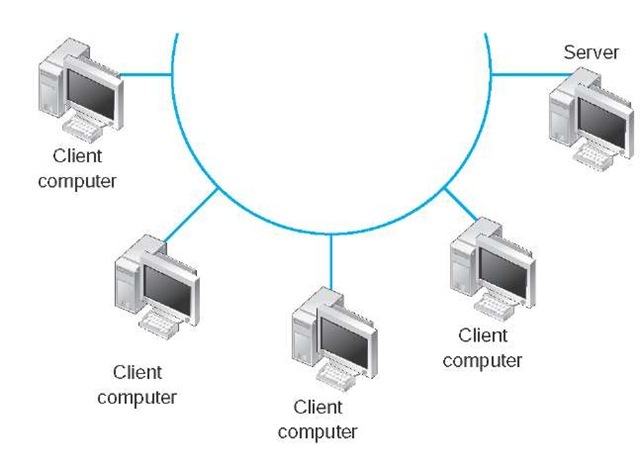Data Communication Circuits
Circuit configuration is the basic physical layout of the circuit. There are two fundamental circuit configurations: point-to-point and multipoint. In practice, most complex computer networks have many circuits, some of which are point-to-point and some of which are multipoint.
Figure 3.1 illustrates a point-to-point circuit, which is so named because it goes from one point to another (e.g., one computer to another computer). These circuits sometimes are called dedicated circuits because they are dedicated to the use of these two computers. This type of configuration is used when the computers generate enough data to fill the capacity of the communication circuit. When an organization builds a network using point-to-point circuits, each computer has its own circuit running from itself to the other computers. This can get very expensive, particularly if there is some distance between the computers.

Figure 3.1 Point-to-point circuit
Figure 3.2 shows a multipoint circuit (also called a shared circuit). In this configuration, many computers are connected on the same circuit. This means that each must share the circuit with the others. The disadvantage is that only one computer can use the circuit at a time. When one computer is sending or receiving data, all others must wait. The advantage of multipoint circuits is that they reduce the amount of cable required and typically use the available communication circuit more efficiently. Imagine the number of circuits that would be required if the network in Figure 3.2 was designed with separate point-to-point circuits. For this reason, multipoint configurations are cheaper than point-to-point circuits. Thus, multipoint circuits typically are used when each computer does not need to continuously use the entire capacity of the circuit or when building point-to-point circuits is too expensive. Wireless circuits are almost always multipoint circuits because multiple computers use the same radio frequencies and must take turns transmitting.


